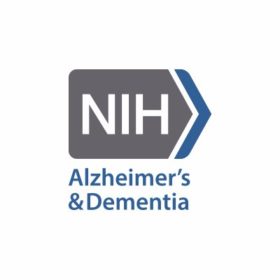 The rationale for pursuing global AD/ADRD research in LMICs is compelling. Approximately 60% of all people living with AD/ADRD live in LMICs, and this percentage is expected to increase to 71% by 2050. Moreover, the number of people living with AD/ADRD in LMICs is expected to experience a greater increase compared to the number of people with AD/ADRD in high-income countries by 2050 due to increases in life expectancy alongside a greater burden of risk factors. Furthermore, these projections might be confounded by temporal changes due to shorter survival after dementia, lack of education and awareness, inadequate diagnostic assessment, and variability in costs of care for the elderly with AD/ADRD, all of which could lead to under-accounting of the AD/ADRD burden. Although most people living with AD/ADRD live in LMICs, research on AD/ADRD in these regions is limited and under-resourced. Most research data on AD/ADRD and evidence for AD/ADRD risk factors come from high-income countries (HICs) and research and data on the impact of risk factors on AD/ADRD in LMICs are lacking.
The rationale for pursuing global AD/ADRD research in LMICs is compelling. Approximately 60% of all people living with AD/ADRD live in LMICs, and this percentage is expected to increase to 71% by 2050. Moreover, the number of people living with AD/ADRD in LMICs is expected to experience a greater increase compared to the number of people with AD/ADRD in high-income countries by 2050 due to increases in life expectancy alongside a greater burden of risk factors. Furthermore, these projections might be confounded by temporal changes due to shorter survival after dementia, lack of education and awareness, inadequate diagnostic assessment, and variability in costs of care for the elderly with AD/ADRD, all of which could lead to under-accounting of the AD/ADRD burden. Although most people living with AD/ADRD live in LMICs, research on AD/ADRD in these regions is limited and under-resourced. Most research data on AD/ADRD and evidence for AD/ADRD risk factors come from high-income countries (HICs) and research and data on the impact of risk factors on AD/ADRD in LMICs are lacking.
AD/ADRD risk and protective factors in HICs might be different from those in LMICs, and modification in interventions might be required for people from different regions and cultures. Diversity in AD/ADRD research participants and global research are crucial in ensuring research findings are generalizable. Moreover, global AD/ADRD research and cross-country comparisons may assist in improving our understanding of the multifactorial and complex nature of AD/ADRD. The wide variety of dietary, lifestyle, and environmental exposures, as well as genetic variation of respective populations, can provide valuable insights on factors that contribute to, or protect against, developing AD/ADRD in different populations.
A dearth of AD/ADRD research in LMICs has created limitations in knowledge of AD/ADRD epidemiology, which warrants the need for sustainable AD/ADRD research programs in LMICs. Supporting AD/ADRD research, research infrastructure, and AD/ADRD scientists in LMICs will provide the opportunity to study populations that are currently underrepresented in AD/ADRD research and ultimately lead to more evidence-based prevention, detection, intervention, and treatment strategies for those populations. Evidence-based AD/ADRD prevention, detection, and intervention strategies that are practical for populations living in LMICs could contribute greatly to reducing the global burden of the disease due to the higher prevalence of modifiable risk factors in LMICs compared to HICs, and the subsequent higher potential for AD/ADRD prevention in LMIC regions.
Purpose
Through this NOFO, the National Institute on Aging (NIA) seeks to support Cooperative Agreement (U01) projects that propose to achieve the following objectives:
- Enable the formation of transformative collaborations between institutions/scientists in the U.S. and LMICs.
- Support experienced LMIC scientists to perform innovative and sustainable AD/ADRD neuroscience research within their LMIC environment.
These research programs are expected to contribute to the long-term goals of building sustainable AD/ADRD neuroscience research capacity and research, ultimately leading to prevention and mitigation strategies for AD/ADRD in LMICs. To achieve this goal, the proposed projects are expected to include the following types of activities:
- The formation and/or solidification of collaborations/partnerships between scientists/institutions in the U.S. and LMICs using a Multiple Principal Investigators(MPI) approach. MPIs should consist of at least one scientist working in an institution based in an LMIC and at least one U.S. scientist. Scientist(s) from LMIC institutions must have prior experience conducting neuroscience AD/ADRD research and may demonstrate experience either through proof of leading a scientific endeavor or through receipt of funding from a local funding agency. The U.S.-based scientist(s) must have documented experience conducting research within LMIC settings, as well as experience conducting NIH-supported research. To enable succession planning, LMIC institutions are encouraged to include at least one early-stage investigator in the research team and to include them in the development and planning aspects of the research award. Applicants must present an MPI plan that clearly delineates roles and responsibilities. Applicants are encouraged to involve multiple U.S. and LMIC partner institutions in the proposed research project, as scientifically appropriate and justified. Partnerships with appropriate LMIC governmental organizations, non-governmental organizations (NGOs), and academic institutions are encouraged. Initial inclusion of more than three LMICs in the overall partnership structure for new applications is likely to be very challenging and should only be undertaken if there is strong justification, including how the partnership will be managed and how the support and responsibilities will be distributed.
- The formation of an External Advisory Board with subject matter expertise in order to supplement or complement the areas of expertise of the research team members. The proposed External Advisory Board is required to provide guidance and feedback on conducting the research project and develop a sustainability plan. The composition of this committee depends on the nature and scope of the project, and the committee may include, as appropriate to the project, individuals employed by the Program Director/Principal Investigator’s (PD/PI) institution. The application should identify the types of expertise appropriate for the External Advisory Board, the number of members, and the operations and frequency of meetings, but it must NOT recommend individuals by name nor provide biographical sketches of proposed members. Membership can be negotiated with program staff at the time of award.
- Conducting AD/ADRD neuroscience research within LMICs, that addresses significant issues unique to LMICs and that are also relevant to the U.S.. Applicants must demonstrate relevance to their LMIC as well as how their proposed research can inform preventative or therapeutic strategies for the U.S.
Specific Areas of Interest
Investigators should propose studies that advance understanding of AD/ADRD neuroscience in LMICs. Although study designs will depend upon the specific goals of the project, all applications must clearly define the population(s) or sub-population(s) of interest and describe how investigators will ensure representation appropriate for future research goals. All studies must have a neuroscience focus. Research areas include, but are not limited to, the following:
- Descriptive epidemiology and trends (i.e., incidence, prevalence, morbidity, mortality) in diverse populations.
- Longitudinal cohort and other epidemiological studies that investigate risk and preventive factors associated with mild cognitive impairment (MCI),AD/ADRD, and/or neuropathological outcomes in diverse populations. Risk factors include those that are genetic, environmental, modifiable, and co-morbidities.
- Novel genetic variants that may have a strong genetic contribution to AD/ADRD biology.
- Examination of the association between highly prevalent co-morbidities (e.g., cardiovascular risk factors, diabetes, dyslipidemia, peripheral arterial disease), cognitive impairment and AD/ADRD phenotypes.
- The role of early life co-morbidities, such as childhood infections and diseases prevalent in LMICs.
- The impact of the exposome (e.g., environmental exposures including environmental toxicants, air pollution, and diet) on brain health, AD/ADRD risk, and cognitive reserve/resilience.
- The role of infectious agents, including COVID-19, in cognitive impairment and AD/ADRD.
- Etiology of age-related AD/ADRD subtypes.
- Genetic and other -omics data (e.g., APOE status, genome-wide association study or whole sequencing, epigenetics, transcriptomics, metabolomics, and proteomics).
- Neurobiological and Neuropathological neuroimaging endpoints, including, but not limited to, the use of novel positron emission tomography (PET) ligands; cerebrospinal fluid, or blood-based biomarkers such as beta-amyloid, tau, and neurofilament; and autopsy tissue when possible.
- Physiology and other co-morbidities including, but not limited to, obesity, diabetes, hypertension, and other vascular contributions to cognitive impairment (VCID); brain stress measures (e.g., autonomic, cortisol, EEG, fNIRS); role of inflammation or immune systems; and mental health history.
- Identification of underlying mechanisms of cognitive reserve/resilience (e.g., protective genotypes of cognitive reserve).
- Development of accessible, low-cost tools for the diagnosis of AD/ADRD.
- Population-based research for the discovery or expansion of predictive pre-clinical biomarkers (e.g., blood, fluid, neuroimaging, language) associated with vascular or neurological changes in different populations.
Annual Investigator Meeting
Investigators are expected to participate in an annual (virtual or in-person) PD/PI meeting. The first meeting will be held after the first Notice of Awards are issued. The meeting is expected to last up to two days. The annual meeting will provide a forum for investigators to discuss research updates, identify opportunities for synergy and collaboration across projects (e.g., data harmonization, protocol optimization), and identify pertinent research challenges and solutions. The consortium coordinating center will organize annual meetings in coordination with NIA Program Officials and Project Scientists and investigators and develop the agenda with input from the funded research teams. Applicants should include funds to support travel to the meeting in their yearly budget.
Non-responsiveness Criteria
The following types of applications will be considered non-responsive and will be withdrawn prior to review:
- Applications that include non-human animals.
- Applications that include populations not from LMICs.
- Applications that do not propose research related to AD/ADRD neuroscience.
- Applications from high-income countries, as defined by the World Bank.
- Applications not from an established LMIC investigator.
- Applications which do not include a U.S. collaborator.
- Applications that do not include a U.S.-LMIC collaborative MPI plan.
Frequently Asked Questions
Responses to frequently asked questions about this NOFO will be posted here.
Resources for Applicants
Applicants are encouraged to leverage existing NIH and NIA-supported infrastructure, such as the following:
- Human, Health and Hereditary in Africa (H3Africa)
- Harnessing Data Science of Health Discovery and Innovation in Africa (DSI-Africa)
- Global Environmental and Occupational Health program (GEOHealth)
- Health and Retirement Study: International Family of Studies
- Harmonized Cognitive Assessment Protocol (HCAP) Network
- Gateway to Global Aging
- Alzheimer’s Disease Research Centers
- Alzheimer’s Disease Sequencing Project
- NIA’s Genetics of Alzheimer’s Disease Data
Foreign Organizations
Non-domestic (non-U.S.) components of U.S. Organizations are not eligible to apply.
Foreign components, as defined in the NIH Grants Policy Statement, are allowed.
Visit funding web page
(https://grants.nih.gov/grants/guide/rfa-files/RFA-AG-25-032.html)

